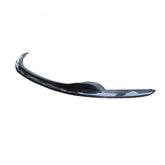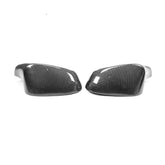Reading and understanding tyre wear patterns is an essential skill for any driver. It not only helps in maintaining your vehicle but also ensures your safety on the road. Tyre treads can tell you a lot about the health of your tyres and your car’s overall alignment and suspension condition. Here’s how to decode these patterns and what they may indicate about your vehicle's performance.

1. Even Wear
What It Looks Like: The tread depth is uniformly reduced across the entire width of the tyre.
What It Means: Even wear is typically a good sign, indicating that your tyres are properly inflated and your wheels are well-aligned. This pattern suggests that the tyres are rotating correctly and wearing at an expected rate.
Action: Continue regular maintenance and ensure that tyre pressures are checked frequently to maintain this even wear.
2. Center Wear
What It Looks Like: The tread is noticeably more worn in the center than on the edges.
What It Means: Center wear usually occurs when the tyre is consistently over-inflated. When tyres are over-inflated, the center of the tyre bulges and makes more contact with the road than the edges.
Action: Check your tyre pressure and adjust it according to the manufacturer's specifications. Regular monitoring can prevent this pattern from forming.
3. Edge Wear
What It Looks Like: The edges of the tyre are worn, but the center tread maintains a deeper depth.
What It Means: This pattern often indicates under-inflation. With too little air pressure, a tyre’s sidewalls can’t properly support the vehicle’s weight, causing the edges to bear more road contact.
Action: Inflate your tyres to the proper level as recommended by the vehicle manufacturer.
4. Cupping or Scalloping
What It Looks Like: Diagonal and irregular wear patterns across the tread or along its edges.
What It Means: Cupping can be a sign of suspension problems. It may indicate that parts like shock absorbers or struts are worn out, allowing the tyre to bounce excessively as it travels down the road.
Action: Have your suspension system checked and repaired by a professional. Replacing worn suspension components can prevent further tyre damage.
5. Feathering
What It Looks Like: The edges of each tread rib develop a slightly rounded border on one side and a sharp edge on the other.
What It Means: Feathering is often caused by poor toe alignment, which is the directional angle of the tyres relative to the vehicle’s centerline. Incorrect toe settings can cause a feathering pattern due to excessive side-to-side scrubbing.
Action: Get a professional wheel alignment focusing on correcting the toe settings.
6. One-Sided Wear
What It Looks Like: One side of the tyre is worn significantly more than the other.
What It Means: This wear pattern is typically a sign of poor wheel alignment, specifically camber misalignment. Camber is the tilt of the tyre relative to the vertical direction of the car. Improper camber angles can cause one side of the tyre to make more contact with the road.
Action: Schedule a camber adjustment and wheel alignment service.
Understanding tyre wear patterns is crucial for maintaining your vehicle’s performance and your safety. Regular checks can help you identify issues before they lead to more significant problems or accidents. Always consult with automotive professionals when uncertain and adhere to recommended vehicle maintenance schedules to keep your tyres in optimal condition.










